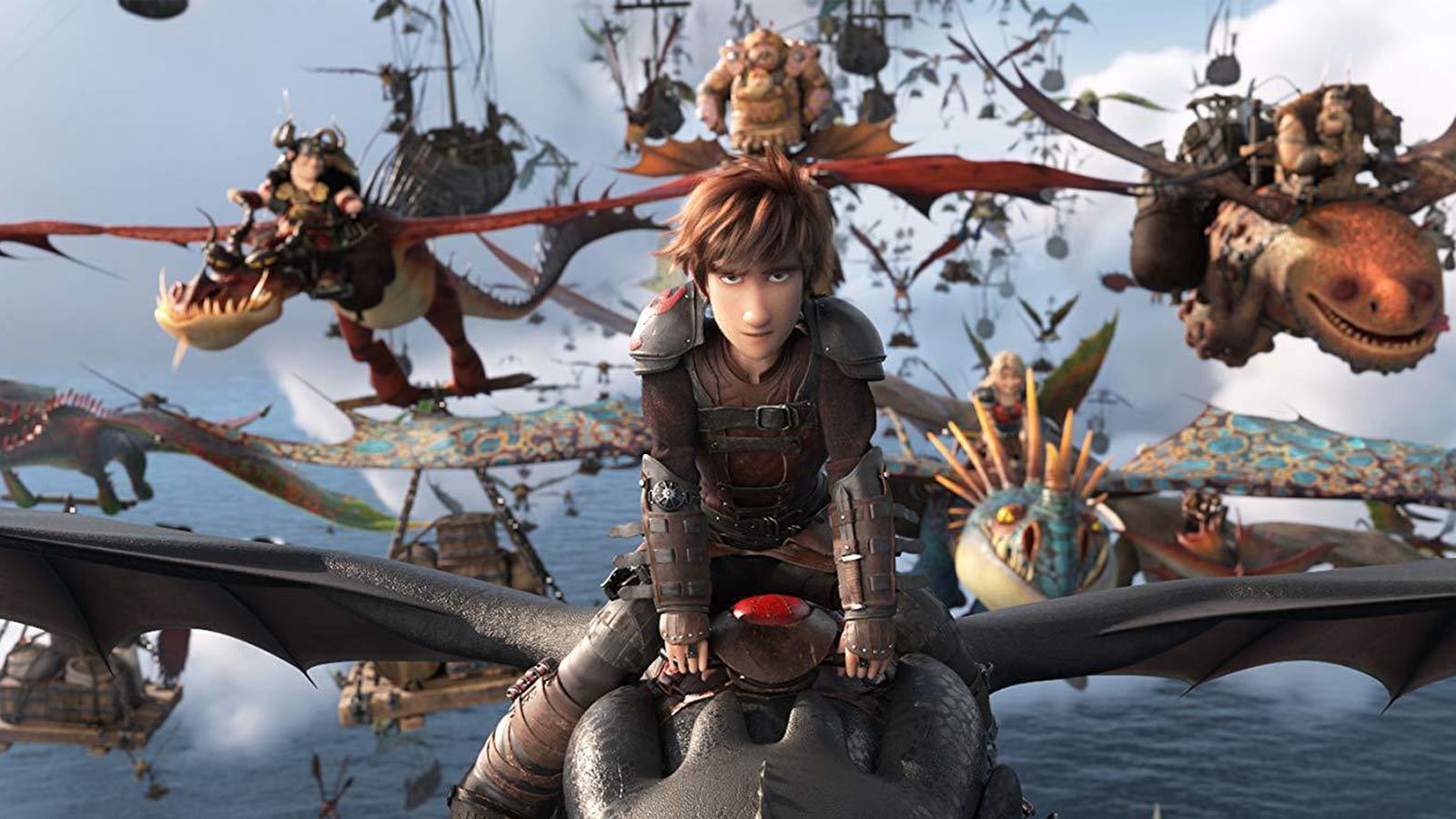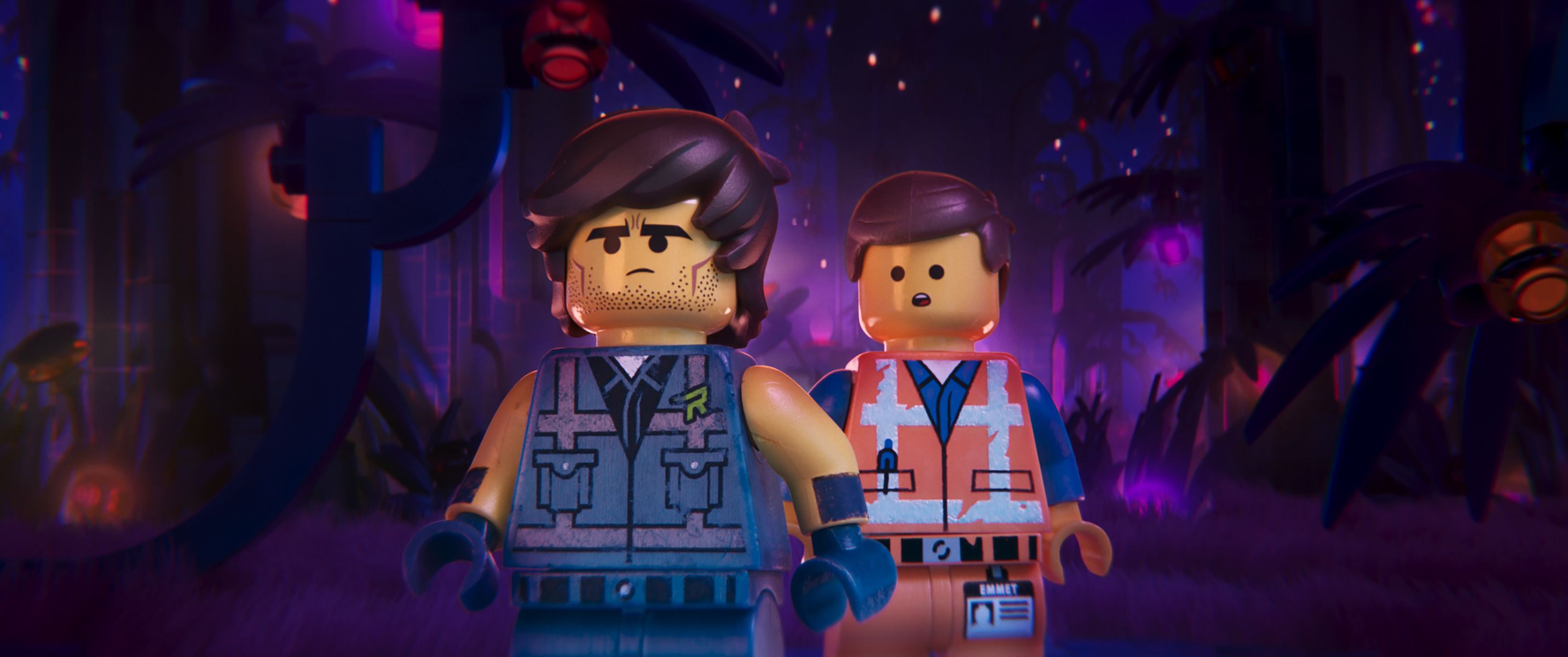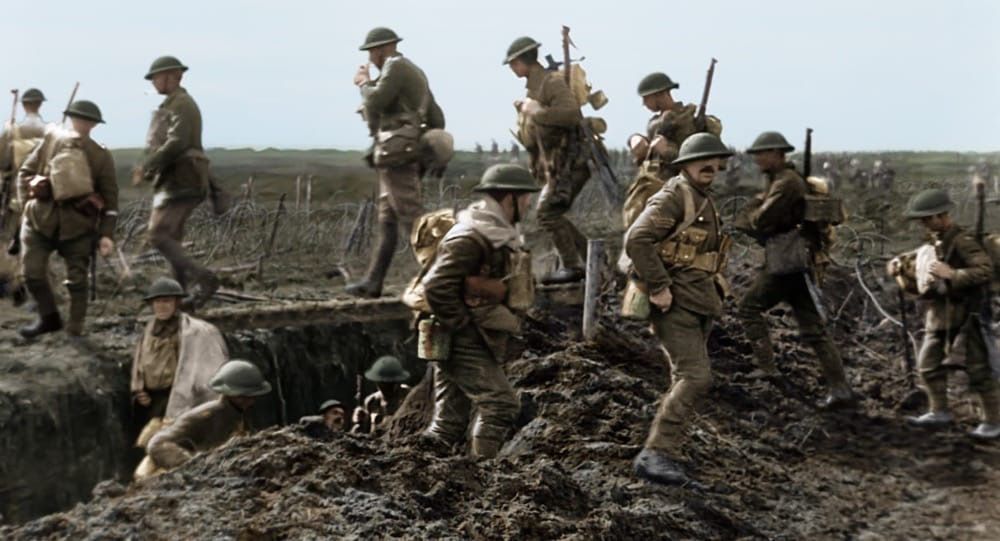Dreamworks Animation’s finest franchise comes to a rousing end with How to Train Your Dragon: The Hidden World. This trilogy capper is as robustly animated and deeply felt as its predecessors, brimming with detail and invention, welling with emotion satisfying and earned. If some of its adventure plotting seems thinner and more perfunctory this time around, its expansive heart and moving generosity towards its characters’ conclusion more than makes it an overall worthy finale. Writer-director Dean DeBlois and his creative partner Chris Sanders return us once again to the tiny village of Berk, where live the only Vikings who’ve learned to peacefully coexist with dragons. Because of this, they’ve been targeted by others who still view the beasts as pests to be eradicated, a direct challenge to their philosophy and to their still-untested young chief Hiccup (Jay Baruchel). As he makes moves to improve his people’s lives — and hopes to convince his sweetheart (America Ferrara) to marry him — a new enemy arises. The sinister villain (F. Murray Abraham) happens to be the very hunter who has killed off all but one of the Night Furies, the species of Hiccup’s beloved jet-black dragon Toothless. (That there may yet be hope for the Night Furies, in the figure of a pure-white female counterpart, is a fine reflection of the human hero’s romance.) So the plot of the film concerns the Berk-ians attempts to secure safety for themselves and their dragons once and for all, and the full finality of the machinations lend the film a sturdy weight as it approaches its climax. Moving quickly, it drifts behind and builds upon the foundation of the first two films, wringing all the suspense and affection out of the boy-and-his-dragon relationship as they have grown and changed and may yet find themselves going their separate ways — to grow apart, yet not alone, and hopefully not forever. Amidst the characters’ empathetically told developments, the action is swift and visually appealing. The production design remains a CG dazzlement of richly lit and staged computer images overseen by visual consultant Roger Deakins. The sweeping epic score by John Powell booms and floats with triumphant grace. Far more than merely the surface pleasures, and not only a warm nostalgic victory lap in a lovable fantasy world, the film finds a stirring and fitting end point for three films, taking its ensemble, and its core man-and-beast bond, to a suitable end at once surprising and natural. It’s a worthy final chapter indeed. What a relief to find a series that took off well, and then soared to even greater heights, come in for a fine landing.
Sunday, February 24, 2019
Saturday, February 9, 2019
Brick to the Future: THE LEGO MOVIE 2: THE SECOND PART
To make one LEGO Movie that’s a surprisingly sharp, cleverly constructed laugh-a-thon doubling as a sweet-tempered message about creativity is surprising enough. To do it again is some kind of miracle. In The LEGO Movie 2: The Second Part, returning screenwriters Phil Lord and Chris Miller, handing directorial efforts to Trolls’ Mike Mitchell, have built a pleasant and perceptive commercial comedy about sibling relationships. It’s couched in the garb of a post-apocalyptic parody, jumping off from the central metaphor of the first movie — a boy’s playland saga rendered in tiny bombast and Chosen One pastiche — and its winning final joke — his younger sister’s toddler-voiced Duplo blocks invading Bricksburg. Now, 5 years later, the first film’s characters are wallowing in young male adolescent fantasy, shirking the bright colors and poppy music for something more stereotypically brooding. The wasteland of destruction in which dopey Emmet (Chris Pratt), punkish Wyldstyle (Elizabeth Banks), and surly egomaniacal Batman (Will Arnett) now live is a broad parody of the stunted mindset that views grim and gritty and self-consciously dark as inherently more mature storytelling. Trouble comes when the Sistar system sends alien invaders to capture all but Emmet, taking them through the Stair-gate to see their Queen Whatevra Wa’nabi (Tiffany Haddish) who has plans involving the impending Ourmomageddon. (Subtle, the movie ain’t.) So it’s Pratt to the rescue, though he’s so hapless he’s quickly greeted and assisted by a galaxy-defending, raptor-training doppleganger (get it?). The whole thing becomes a goof on dark sequels with bleak cliffhangers while doing its darnedest to actually dig deeper into its central premise. It’s definitely less surprising and clever on a moment to moment basis — mostly for the obvious ways it can’t replicate the original’s surprise factor — but is a sharper, wiser, cleverer, and more empathetic moral vision than before, baked into the very structure of its plot. It becomes a movie about a boy who needs to learn growing up doesn’t mean giving into toxic masculinity, like hiding behind a false rough exterior that can’t let his little sister in, and that it's okay to embrace complicated emotions. That the message is carried about by a zippy, flashy, colorful adventure movie filled with bouncy action, loopy sight gags, loony non sequiturs, and a handful of supremely catchy songs is all the better for its intended audience. It’s all of satisfying complete vision, a fun kids' movie with a moral that’s truly centered instead of tacked on. Unlike, say, The LEGO Batman Movie spin-off, which was only a clever self-referential Russian nesting doll of product placement, The LEGO Movie 2 manages to repeat the feat of its predecessor by being funny and sweet and low-key sentimental enough to achieve escape velocity from mere crass commercialism, by being a movie first and toy ad second. If we have to have these, they might as well be this much fun.
Friday, February 1, 2019
Desolation Rows: THEY SHALL NOT GROW OLD
They Shall Not Grow Old is a film of uncanny and quotidian horror, of great sacrifice and great staggering normalcy in a time of nigh incomprehensible conflict. It’s also about film’s ability to capture history and its inability to ever really resurrect what is irretrievably lost. It’s an often staggering technical accomplishment because of and despite of its capacity for running up against technical limitations. Commissioned to commemorate the centenary of World War I’s end, Peter Jackson’s haunting documentary weds a trove of source materials into a transportive eerie exercise in historical footage. He takes a beautiful collage of first-hand interviews with elderly British Great War veterans, recorded by the BBC in the middle of the twentieth century, for a narration, the average experience of a soldier in this conflict described in vivid, lively memories. He lays it over film largely taken at or near the front, a steadily accumulating montage of documentary footage woven into a trench-side view of the war: large stretches of boredom and squalor punctuated by sheer terror, all held to the terrifying backbeat of irregular explosions — often in the distance, but one never can tell when it’ll smash into one’s position. The film starts powerfully, and yet as a rather standard exercise, nothing Ken Burns couldn’t do as good or better on an off day. There’s a square little nitrate-grey frame that shows us early days of enlistment and patriotic fervor. But then Jackson, in warfare filmmaking as intimate on out as his Tolkien adaptations are epic on in, introduces a visual conceit that blooms into unnatural life as the army ships out. The frame fills the screen, in subtle 3D and hushed, respectful colorization. Far from the Turner-produced classic-Hollywood-defacing crayon jobs of the late 80’s, this soft dusting of studiously researched color brings the crisply and carefully restored footage out of the distant past and into a collision with the present, a dusty history book blearily drawn through a scrim of modern technology creating the effect of an old memory clawing back to life. Sometimes the images are startlingly real, tactile muck and flashes of personality cracking and crackling on century-old images accompanied with invisibly convincing Foley and ADR. Other times the movement has a slight haze, the color and the grain — joined and often slightly above the image in a light, barely-perceptible dance of pans and zooms — creates a fortuitous ghostly dance. It’s a documentary of haunted immediacy, at once real and unreal, a researched recreation layered over a moving-snapshot memory, that tells a story of young men sent off to die. They are now forever stuck in the past, caught in the moment of bravery, camaraderie, fear, injury, and death. (This is an unblinkingly gruesome movie at times, uncensored and unflinching.) Jackson brings them to life through the words of men who are still astonished to have survived, and through film that, too, survives. It can be restored. They can not.
Subscribe to:
Posts (Atom)



